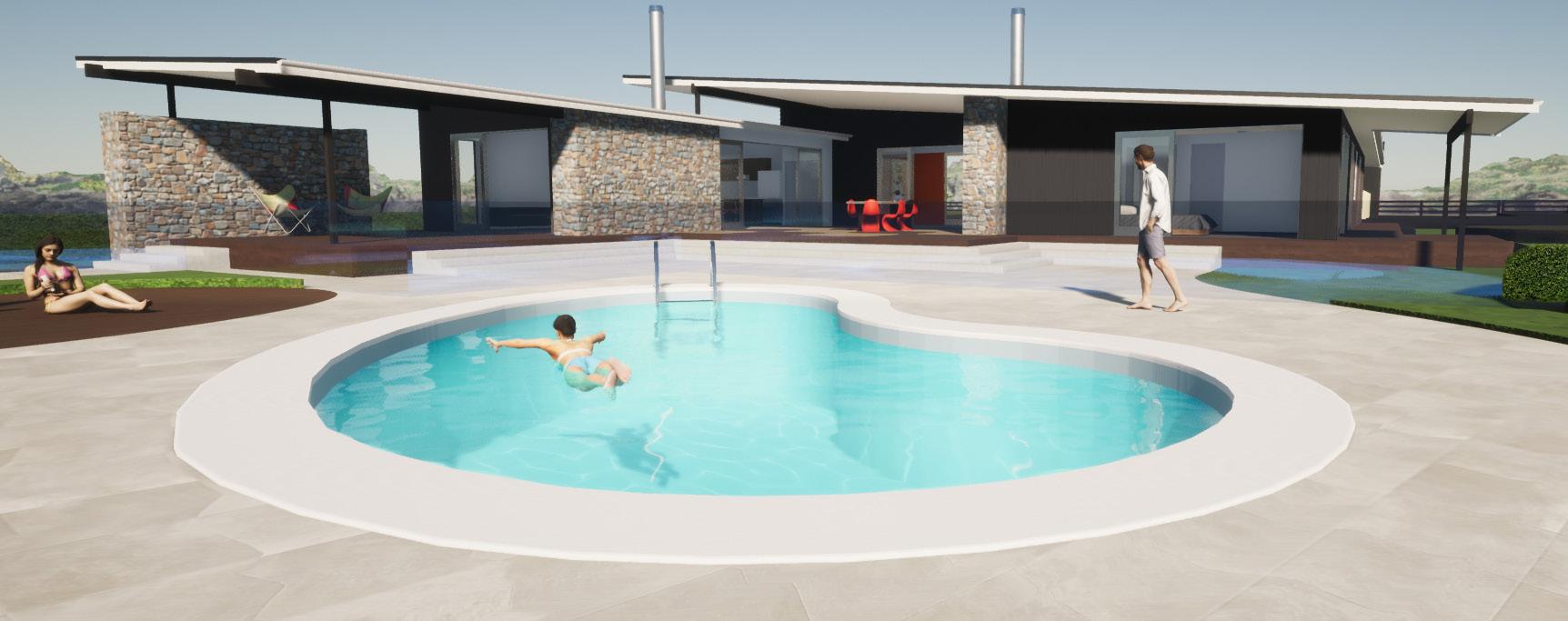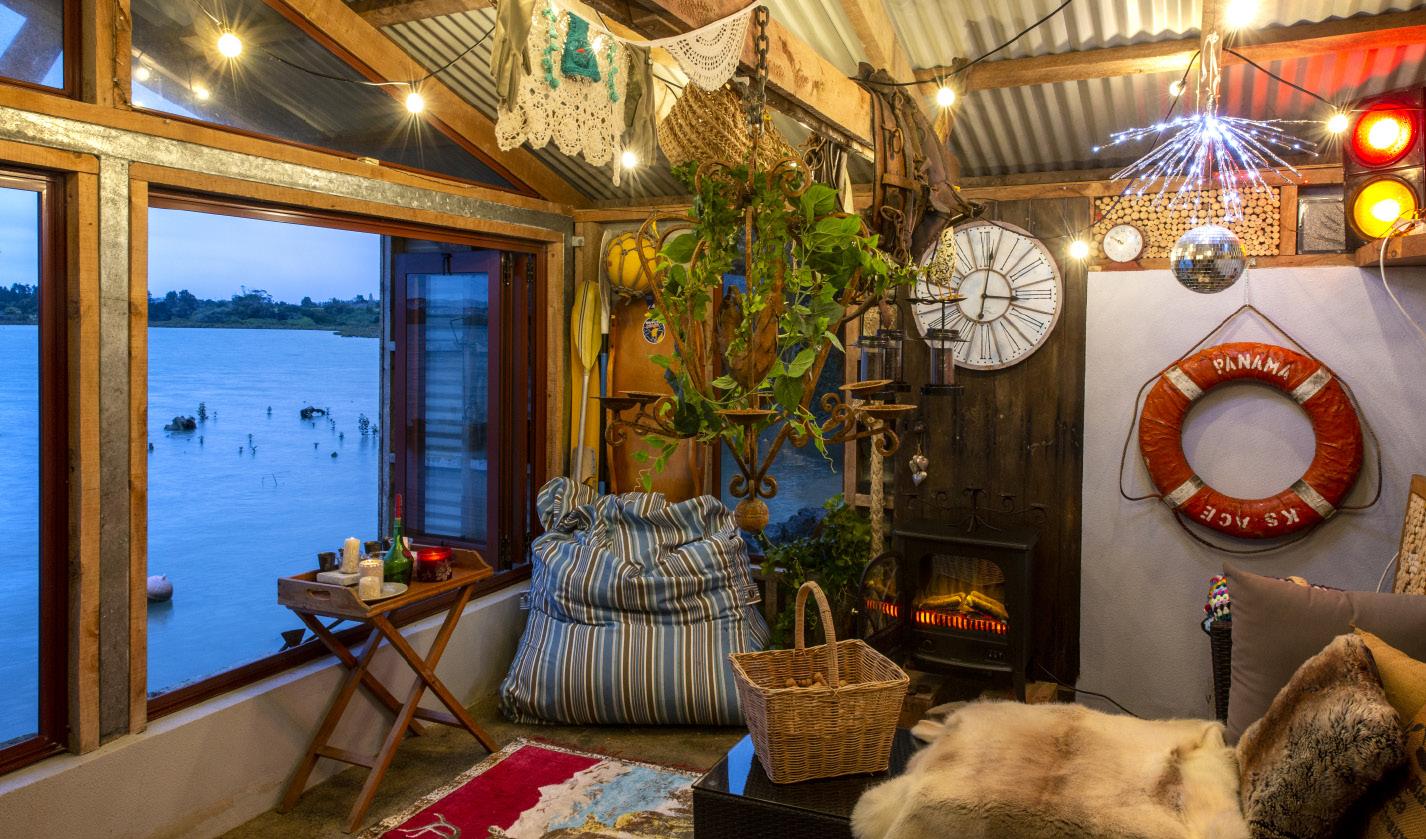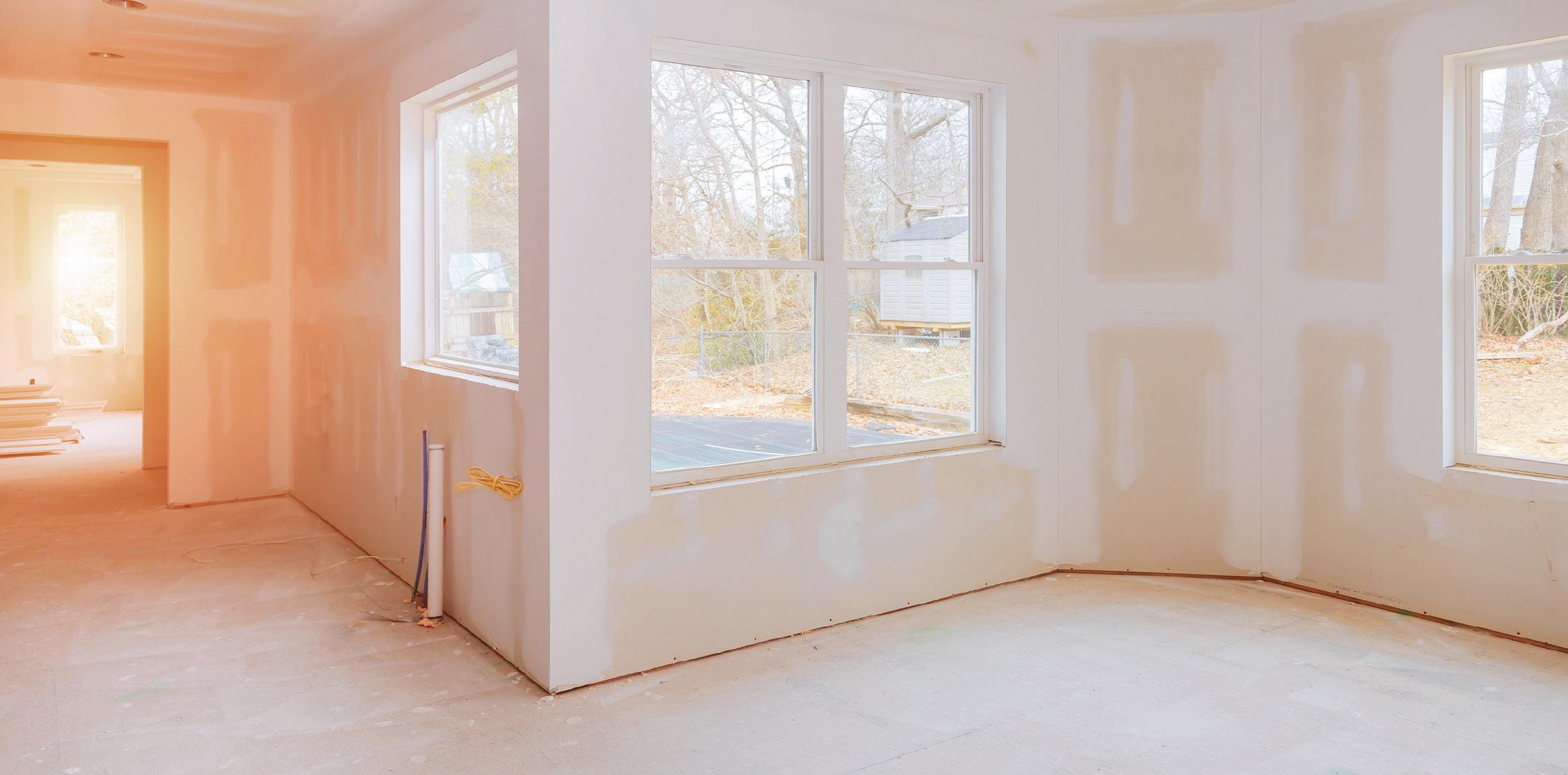
12 minute read
Construction costs rising at the fastest pace on record
CoreLogic NZ’s Cordell Construction Cost Index (CCCI) for Q2 2022 showed national residential construction cost pressures have continued to escalate, with both quarterly and annual rates of indexed growth reaching new record highs.
The CCCI indicates the cost to build a ‘standard’ 200 sqm three-bedroom, twobathroom single storey brick and tile house in Aotearoa rose 2.6 per cent over the quarter, lifting annual growth to 7.7 per cent, the largest increase since the CCCI commenced in late 2012.
CoreLogic chief property economist Kelvin Davidson said the CCCI figures further support the evidence that the industry is under immense cost pressures, with no reprieve expected in the short term. This indexed model of construction costs allowed for standard build times, Davidson said, acknowledging that completion timeframes had lengthened lately as some materials remain hard to procure.
“This is the swiftest rise in the NZ CCCI we’ve seen in a decade and I don’t expect these price pressures to ease for at least another couple of quarters, given ongoing materials shortages and labour pressures,” he said.
CoreLogic construction cost estimation manager John Bennett said rapid recent cost growth has impacted a range of different trade categories and components in residential construction. He said metal prices continue to be affected with further rises to reinforcing, fixings and fittings. The cost of metal also has an impact on fencing and garage doors, as well as the aluminium window industry, with substantial increases for those products too.
“The effect of higher timber costs also continues to flow through the market. We are seeing knock-on effects into different industries such as landscaping supplies and kitchen cabinetry. Imported products, particularly metal based items and tiles, are rising as well as cost hikes from consultancies, affecting preliminary costs,” Bennett said.
“It is important to note that other pressures are at play on the industry with labour availability and overheads impacting costs. Labour availability can also affect build times and can leave builders more exposed to market changes and holding costs. It really is a perfect storm.”
Bennett also stressed that the CCCI is based on detailed cost surveys.
“It’s important to note that with about 40 per cent of the index/model representing labour costs – which have been rising, but not as quickly as some materials – this is one reason why the CCCI is showing slower overall building cost inflation than might be the popular perception.”
The CCCI indicates that new dwelling consents have continued to hover around 50,000 on an annual basis, driven by smaller dwellings such as townhouses which now equate to more than half (51 per cent) of all new consents nationally - a record high. In Auckland, that proportion has surged above 70 per cent.
Davidson said while smaller dwellings may require fewer materials, the volume in the pipeline indicates there will likely be no respite for the stretched materials supply chain - nor for labour capacity.
He said, in turn, this is showing up as continued pressure on construction costs, especially when accounting for alterations/ renovation work and non-consented activity too.
Modernist style house in Clevedon

PDA ARCHITECTS AND LANDSCAPE A very Kiwi boatshed
AUTHENTICITY, MEMORY AND PLACE
BY PETER DIPROSE
Looking back innumerable years, I am still satisfied with my very first completed project – a boatshed with a jetty onto the Waitemata Harbour. In this project we sought to create an authentic design, true to the heritage of rustic sheds and baches that were previously dotted along the Auckland coastline, too many of which have now been removed.
At PDA we believe that design should maximise architecture’s experiential quality – its dynamism and serenity, the stillness or movement created within space, and importantly generate a sense of memory and place.
With regards to the boatshed, we enhanced its sense of place by opening up the front wall to embrace the natural elements and clad the walls and roof in scoria red corrugated metal, a nod to the Rawene Wharf, while complementing the pohutukawa backdrop.
The central post with knee braces pays homage to the structural vernacular of classic Kiwi sheds. Its walls and roof were left unlined to avoid any trapped moisture and ensure the longevity of the structure, leaving plenty of space for my client’s artistic imagination.
A strong sense of personal memory was added to the milieu, with the client’s eclectic interior assemblage that includes an anchor, a lifebuoy, horse collar, candles, rope, rods, sieve, signage, numberplates, oil can, the old outboard, and a myriad of corks from multiple occasions. In pride of place however is the family heirloom McCulloch chainsaw which awaits the next zombie apocalypse.

Many a memory with the eclectic interior
After completing the boatshed, we went on to design the main home on the property. Now, many years later we have been given the opportunity to design another new dwelling on the site.
Taking a similar design approach to that of the boatshed but with quite different results, we sought to create a modern Kiwi classic in one of our current Clevedon projects (refer to the above image).
Here, we have designed a pair of floating mono-pitched roofs that hover above natural stone feature walls. This expansive roof blurs the definition between inside and outside with lounges transitioning into sundecks and BBQ areas, with fireplaces inside and outside. The architecture of this in-between living space with its straight modern lines is contrasted to the outdoor living landscape and its biomorphic shapes that utilises ellipsoidal decks, curvaceous paving, mounded planting, and a kidney shaped swimming pool at its heart.
At PDA Architects we apply our expertise to all things residential – from family homes and gardens to multi-unit and mixed-use developments. We are committed to a team approach to achieve your vision, and whatever the brief, PDA will seek to create a healthy high quality and beautiful living environment.
See more at www.diprose.co.nz, or find us on Facebook and Instagram. Email info@diprose.co.nz or call Peter on 021 125 1498 to discuss your project.
Supply shortages – be prepared

Wynyard Wood senior associate, WINCY CHEUNG, talks about the need to be prepared for supply shortages.
The words on everyone’s lips in 2021 was “Supply Shortage”. We are experiencing New Zealand’s biggest building boom since the 1970s and for the construction industry the shortage in materials and labour has been the focus of many discussions. Whether it be timber, steel, concrete or plasterboard – we simply can’t get our hands on certain materials fast enough or at all.
So what happens now – particularly if you are planning on building.
In the current climate, many builders will be looking to ensure that any cost increases can be passed onto their client. The responsibility for cost increases will therefore depend on the terms of your contract. “My builder has offered me a fixed contract price” – I hear you say and my response will be “ a fixed contract price is never a fixed price”.
Many contracts used in the construction sector will allow builders to recover any cost increases from the client. The most commonly used contracts used for residential developments are the NZ Certified Builders Association (NZCBA) – Fixed Price Building Contract and the Registered Master Builders Association RBC1-2018 (New Build) contract. Both these contracts contain mechanisms which allow the builder to recover the cost of any increase in materials and/or labour.
The NZCBA contract allows the builder to make adjustments to the original fixed price for a number of reasons, one of which is if there is an increase in the cost of subcontractors or materials (clause 5 – Cost Fluctuations). There are a number of provisos to such recovery: • the increase must not have been reasonably been foreseen by the builder; • the increase must have eroded the
builder’s profit margin; • quotations and invoices must be provided as proof of increase.
In the real world at present, builders are facing monthly price increases so homeowners can argue that builders should not be able to recover such cost fluctuations.
However if this approach is taken then homeowners will often find that the builder is then required to factor such increases into its original price. This results in homeowners ultimately bearing this additional cost and rather than negotiating the increase if and when it arises, homeowners have in actual fact crystallised the increase from the outset.
There will inevitably be a winner and loser and the approach that a homeowner chooses to take will often depend on each person’s view of the risk and whether they can manage that risk.
The RBC1 contract also allows the builder to adjust the fixed price (clause 46 – Cost fluctuations). Unlike the NZCBA contract, there is no requirement to provide any evidence of price increases or that the builder’s margin has been eroded.
This doesn’t mean that the builder has a carte blanche to inflate those cost increases. There is some degree of protection for homeowners under clause 22, that any adjustments will need to be agreed and if not agreed then the increase will be based on the actual and reasonable cost to the builder plus the builder’s margin.
NZS3902:2004
This form of contract is often used by clients for minor building works or small buildings (such as an extension or garden shed). That is not to say that this contract cannot be used for larger projects.
NZS3902 does not include any express right for the builder to recover any increase in the cost of materials although it does contain a right to recover any increase in costs should the builder be unable to procure certain specified materials and uses alternative materials as a substitute.
However homeowners will find that many costs at risk of price increases, will be included as “Allowances”. Allowances are used in a similar manner to provisional sums or prime costs (terms used in both the NZCBA and RBC1 contracts).
These are a best guess for work that cannot be priced by the builder at the time of entering into the contract for example, site works, services connections or not yet designed structural elements (a pergola where the size or materials has not yet been finalised). The actual cost will then be substituted in at a later date.
PLAN AHEAD
Planning ahead may help homeowners to manage cost increases. We can provide advice on the contract to assist homeowners and builders to clearly set out their respective expectations and responsibilities. However the build contract will not resolve the supply shortage. In today’s environment, it is always important to have a good line of communication with the builder.
Discuss the builder’s supply chain and whether supplies can be ordered early with a view to reducing the risk of cost increases and delays in lead times. If certain materials are in short supply, consider what alternatives you could use (just in case). Always include a buffer in your budget for cost fluctuations. These steps will not be a silver bullet to solving the supply shortage but they may be key to you finishing your project on time and within your expected budget.
If you would like to speak with a construction law expert, please contact Wincy Cheung, wincy.cheung@wynyardwood.co.nz DDI 09 969 6640
Disclaimer: This editorial is brief and general in nature. You are recommended to seek professional advice in relation to the matters dealt with in this publication.
MANAGING BUILD COSTS IN A VOLATILE MARKET
The last couple of years have been extremely challenging for the building sector, with material prices rises, labour shortages, and a supply chain that has struggled to keep up with demand.
Howick-based Faulkner Construction have been building architecturally designed new homes and renovations since 1981. They have “seen it all before” – and still believe there will never be a cheaper time to build your home.
Faulkner General Manager Ross McConnell gives his advice on how to manage build costs in a volatile market: 1. Decide how much you can and want to spend – and commit to it. “I can resist everything except temptation,” said Oscar
Wilde. The building process will send a thousand temptations your way, and you will spend more than you want to unless you are truly committed to your budget. 2. Tell your architect what you have to spend and make sure they design to your budget. Your architect will have more influence on the home you want to build than anyone else. Make sure they’re committed to designing a home that you are committed to paying for. 3. Get an independent budget estimate
from a professional quantity surveyor (QS). When your architect has completed your “Concept Plans”, pause the design process and get an independent QS to price those plans to make sure you’re designing to budget. 4. Find a reputable builder who agrees with your QS. If you haven’t done this already, take your concept plans and budget to a reputable builder and make sure they’re in general agreement with your QS. 5. Complete your building consent plans.
Now that everyone is aligned with your budget, it’s time for your architect to “press on” with the design process and apply for
Building Consent. 6. Get a detailed budget estimate from your builder. “If you can’t measure it, you can’t manage it,” according to management guru Peter Drucker. If your builder can’t provide a detailed budget from your building consent plans, they’re not going to be able to manage your budget when you start building. 7. Plan and protect your contingency. Every project has contingencies, but not every owner remembers to allow for them. Your
QS should have included a contingency budget at step 3 – don’t forget about it. 8. Ask your builder to provide regular updates on actual vs budgeted costs.
And make sure they have the ability to do this before you start building. 9. Try to avoid changing your mind and causing delays. Just kidding – everyone makes changes. Just make sure your builder can quantify the impact of these changes and delays as you go, or you may be surprised how they’ve added up at the end of the project 10. Enjoy your new home. You’ve earned it!

Call us now on 09 534 8166 info@faulknerconstruction.co.nz www.faulknerconstruction.co.nz


ARE YOU CONCERNED ABOUT SUPPLY SHORTAGES?
“My builder has offered me a fixed contract price” – I hear you say and my response will be “a fixed contract price is never a fixed price”. Our advice if you are planning on building; be prepared! If you would like to speak with a construction law expert, contact Wynyard Wood today.
wynyardwood.co.nz/supply-shortages Tel. 09 969 0126










